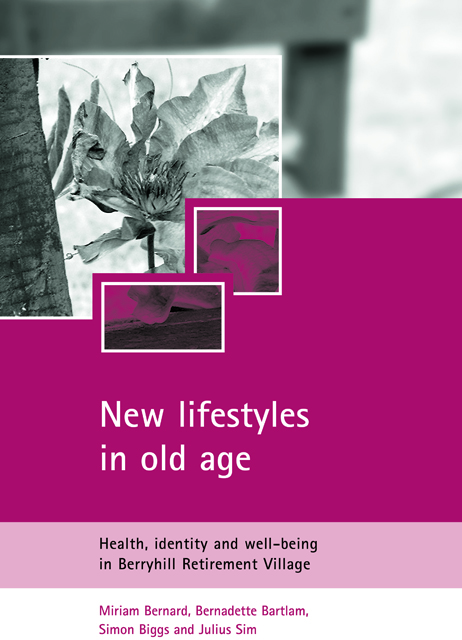Book contents
- Frontmatter
- Contents
- List of tables and figures
- Acknowledgements
- A day in the life of a retirement community resident
- 1 Retirement communities: the context
- 2 Developing a retirement community lifestyle: participation and involvement
- 3 Health and well-being
- 4 Growing older: age and identity
- 5 Conclusions
- References
- Appendix A Research questions
- Appendix B The study’s timeline
- Appendix C Questionnaires
- Appendix D Interviews
- Appendix E Participation groups and community conferencing
Appendix D - Interviews
Published online by Cambridge University Press: 06 April 2023
- Frontmatter
- Contents
- List of tables and figures
- Acknowledgements
- A day in the life of a retirement community resident
- 1 Retirement communities: the context
- 2 Developing a retirement community lifestyle: participation and involvement
- 3 Health and well-being
- 4 Growing older: age and identity
- 5 Conclusions
- References
- Appendix A Research questions
- Appendix B The study’s timeline
- Appendix C Questionnaires
- Appendix D Interviews
- Appendix E Participation groups and community conferencing
Summary
In total, 133 stakeholders were interviewed/ questionnaired:
• directors of the managing organisation: n=3
• developer of the village: n=1
• management staff at the village: n=8
• staff in the village: n=1
• GPs: n=16
• nurses: n=13
• physiotherapists: n=4
• occupational therapists: n=3
• social workers: n=27
• tenants in a local sheltered housing scheme (women): n=5
• waiting list group: n=5
• two groups of mixed-age residents from the two estates bordering the village: n=5 and n=4
• area housing: n=1
• family/friends: n=37
Stakeholders interview schedule
(Research questions in bold before each section of questions).
Introductions. Reminder re consent to tape.
Confidentiality.
1. What is the nature of your professional contact with Berryhill?
A. What effect does the environment of Berryhill have on residents’ well-being?
2. What sort of effects do you see the physical environment of the village as having on residents’ feelings of well-being?
3. What sort of effects do you see the social environment of the village as having on residents’ feelings of well-being?
B. What is the perceived health status of residents in Berryhill?
4. What would be your professional assessment of the physical health status of residents?
5. What would be your professional assessment of the mental health status of residents?
6. How would you see this comparing to older people in general, and in the local community?
7. How does your professional assessment of their health status compare with residents’ own perceptions of their well-being in Berryhill?
- Type
- Chapter
- Information
- New Lifestyles in Old AgeHealth, Identity and Well-being in Berryhill Retirement Village, pp. 69 - 70Publisher: Bristol University PressPrint publication year: 2004



